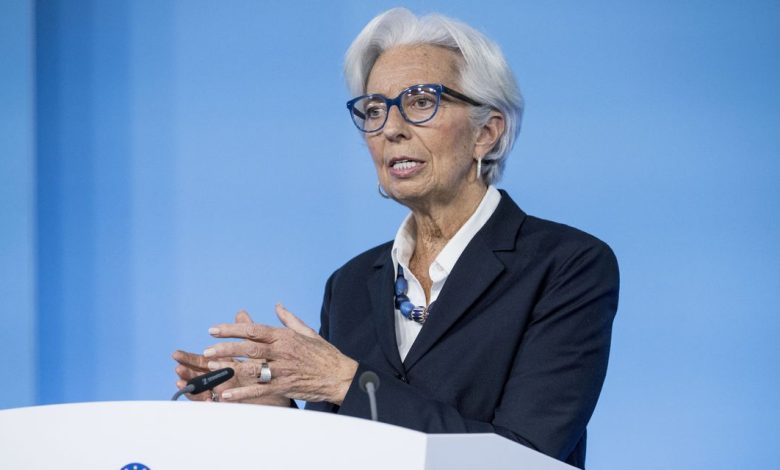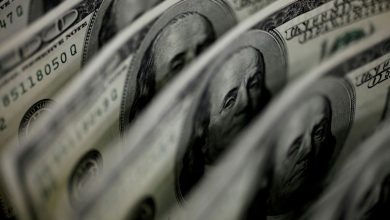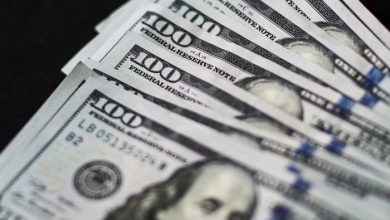Corporate Bonds in Europe Suffer Biggest Fall Since Pandemic Began

Corporate bonds in Europe have taken their biggest hit since 2020 over the past week after a sudden pivot from the European Central Bank toward tighter policy reanimated worries about the region’s economic health.
“The ECB’s unexpectedly hawkish stance has been a detonator for a selloff,” said Vincent Benguigui, a credit portfolio manager at Federated Hermes.
Euro-denominated investment-grade bonds have fallen 1.9% over the past week on a total return basis, the most since June 2020, according to an
BofA index. High-yield bonds declined 2% in their weakest week since the pandemic began.
In a sign that the easy money of the pandemic era is ending, or at least taking a pause, the selloff pushed the yield of a euro-denominated junk-rated bond index above the average coupon rate for the first time since November 2020. This means that riskier companies will generally have to pay more on newly issued debt than what they pay on existing bonds.
Bankers who specialize in helping European companies borrow say the change in tone from the ECB added at least a percentage point to the yields of any new bonds to be sold by a company rated speculative grade.
The market volatility prompted some companies to quickly change plans. This week,
an Italian subsidiary of fintech firm ION Group, switched from selling bonds with a fixed rate to ones with a floating rate, which haven’t come under the same selling pressure.
ECB President
Christine Lagarde
opened the door to an interest-rate increase this year in a news conference last week, marking a key change for a central bank that has kept its policy rate stable at minus 0.5% since September 2019. If implemented, it would be the first increase since 2011.
The shift catalyzed a selloff of both government and corporate bonds. Southern European nations with heavy debt loads and more fragile economies were hit the hardest, raising concerns that the eurozone’s weakest governments and companies could have their recovery hampered by rising debt costs.
“Debt levels have run up significantly in some eurozone economies,” said
Bert Colijn,
a eurozone economist at ING. “This is clearly the story currently priced in bond markets.”
The market reaction in Europe was extreme because the ECB’s shift was more sudden, according to
Stephen Caprio,
head of European credit strategy at BNP Paribas. That contrasts with the U.S., where the Federal Reserve has been flagging tighter policy to fight inflation for several months.
Investors were complacent, Mr. Caprio said. “The reaction can be pretty swift when the regime changes.”
The spread between Italy’s 10-year bond yield and the German benchmark widened to 1.6 percentage points, the most since July 2020. Greece’s equivalent shot up to 2.1 points, the most since May that year.
Some of the pain of the selloff reversed Wednesday after France’s representative on the ECB board said the market had overinterpreted the central bank’s tightening signals. On Thursday, higher-than-expected U.S. inflation data sent yields higher around the world, including Europe.
Corporate debt typically uses a government bond yield as a benchmark. The yield on an index of investment grade bonds rose to a 21-month high this week, reaching 1.2%. For a speculative-grade bond index, the yield hit the highest level in 15 months at 4.1%.
The selloff was the most acute for some junk-rated debt. The yield on a 2030 bond issued by Italian highway operator Autostrade per l’Italia jumped to 2.7% from 1.5% at the end of last year.
Bonds issued by southern European banks also tumbled. The yield on 10-year debt issued by
rose as high as 0.8% this week, more than double that of the end of 2021. For
Mediobanca Banca di Credito Finanziario SpA,
another Italian bank, the yield on a bond maturing in 2027 climbed to 1.52%, adding nearly a percentage point in the same time frame.
Hiring borrowing costs could result in lower issuance. European high-yield issuance hit a record last year as companies tapped the market en masse to take advantage of the historically low borrowing costs, according to data from Dealogic.
Write to Anna Hirtenstein at [email protected]
Copyright ©2022 Dow Jones & Company, Inc. All Rights Reserved. 87990cbe856818d5eddac44c7b1cdeb8
Buka akaun dagangan patuh syariah anda di Weltrade.Source link





